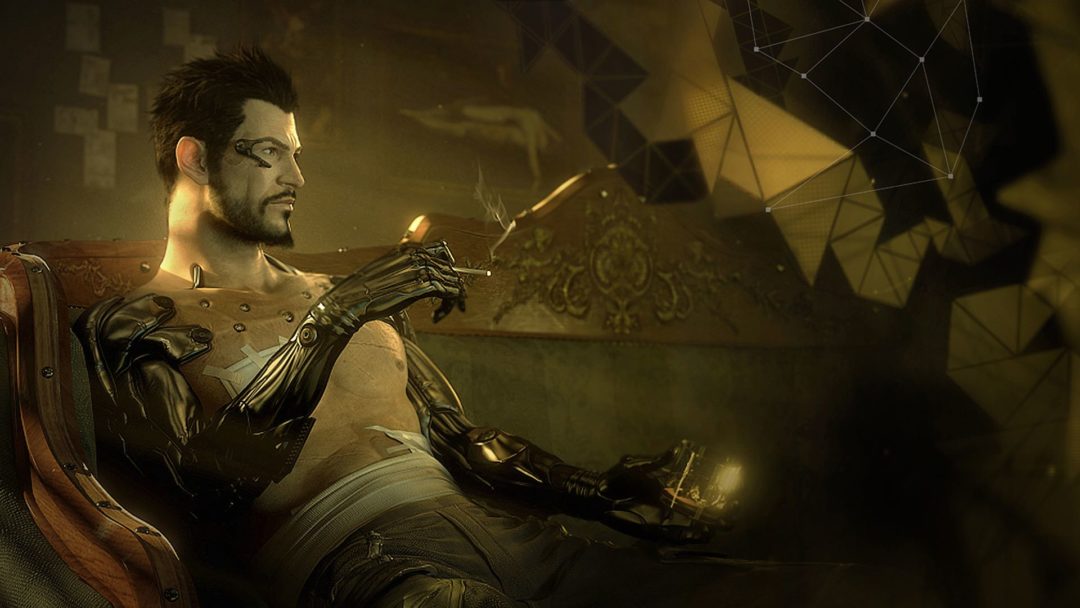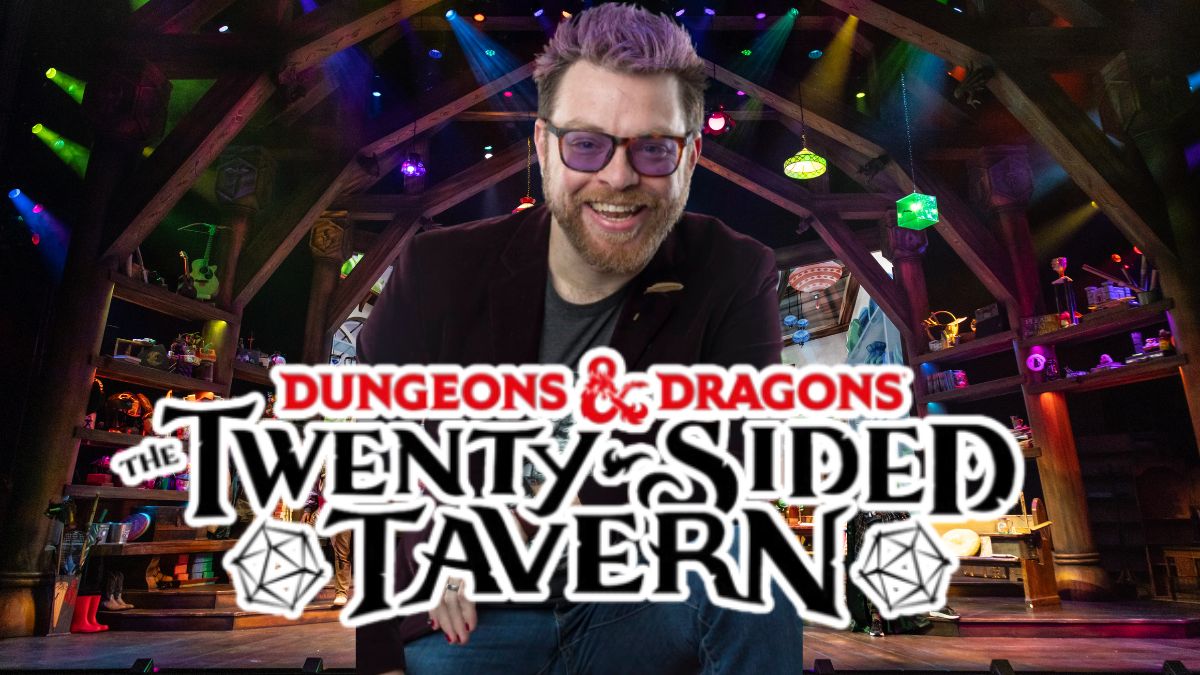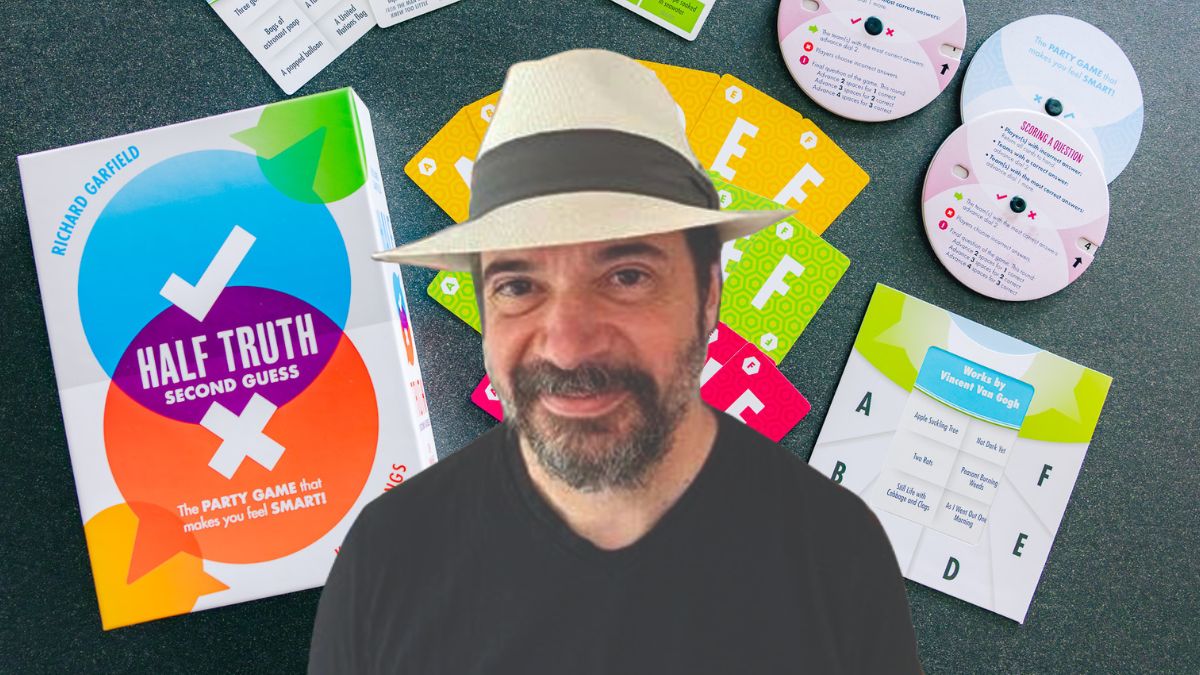Jonathan-Jacques Belletête is not a household name, but if you’ve played console or PC games at all over the past decade, you know his work. Starting with Deus Ex: Human Revolution in 2011, Belletête was responsible for one of the most visually distinct, convincingly wrought science fiction worlds of the 21st century. His work as Eidos Montréal’s art director brought that singular vision of urban decay, futurist architecture, and bizarrely triangle-centric fashion design to millions of players. But for now, his time in gaming’s best known cyberpunk world is over. After more than a decade with the Square-Enix owned studio and two decades in the Montréal dev scene, he’s joined Rogue Factor as creative director.
Belletête and I caught up to talk about leaving behind Deus Ex, starting over after so long, the evolving world of game creation in Montréal, and how his life will change at Rogue Factor.
How’s it feel to be joining an entirely new team after 13 years with the same studio?
It’s a feeling I hadn’t felt in a long time. Leaving Eidos was a hard decision to make. The core design team there are friends I’ve been designing with for 12 to 15 years now. I’ve probably spent more time with them than most people in my life. But at the same time, joining a new studio feels like a huge breath of fresh air. I have so many new things to learn and new challenges to take on. Also, when you join a new team you have to prove yourself, which is perfectly normal, and in all honesty I haven’t been in a situation like this in a very long time. It brings back all sorts of feelings. The team I just joined is an amazing group of people and they have a lot of experience with the types of games they make. They’ve been to “war” together a few times already. Earning their trust and becoming part of their family is something that stimulates me.
How have you changed over the past 13 years as a creator? How have your feelings about games changed over that period?
Man, I’ve changed so much. Mostly in good ways, I hope! I definitely went from thinking I knew what I was doing and being wrong to actually kind of knowing what I’m doing. Which is an improvement! I certainly have developed a proper creative method now, a signature you could say. These are things that were much more dormant 13 years ago. They were definitely there, but in a very raw and unharnessed primordial state. My feelings about games in general have changed a lot as well. You grow older, you have less time and less patience.
How has your process changed over that period?
I think my end goal has remained the same. But it’s how I get there, the processes, that have been reshaped and improved a lot. For me, designing something, anything, has always been about making a statement, about finding your own voice and trying to generate an impact, a slap to the face even. This philosophy is as strong today as it was 13 years ago. Designing a game takes so much effort and time that I will never understand how one could just simply go through the motions and do “just another one.” I constantly obsess about finding that grand inspirational vein that will be the catalyst and through-line for an entire project. The core idea or analogy that will create a strong distinction for the product; and consequently, if successfully exploited, generate a strong desire to be part of it from anyone who sees it.
How has the culture of game development in Montréal changed over the past two decades since you entered the industry?
Quite a bit! Two decades ago you pretty much only had Ubisoft and a handful of smaller independent studios. Most of us were developing for the PlayStation or PC and some were already having fun with the PlayStation 2. The first wave of great classics that eventually came out of this city (Prince of Persia: The Sands of Time, Tom Clancy’s Splinter Cell, Far Cry, etc.) were not out at that point. The second wave of IP (Assassin’s Creed, Watch Dogs, Deus Ex) weren’t even on the horizon yet. The city is now a major world platform in game development, and what I find amazing is not just the amount of big name studios but the sheer number of smaller indie studios we have here now. It seems like a new one pops up every week.
But one thing has remained the same: even if Montréal is one of the main game development hubs, the industry here still feels smaller than it really is. What this means is that even though we’re talking about thousands and thousands of people spread across many offices, the speed at which culture, ideas, information and gossip travel is impressive. Everybody knows each other and lot’s of people have worked at most of the big studios, sometimes more than once. This means that it’s generally a good idea to be on your best behavior, as news gets around fast!
Why Rogue Factor? What appealed to you about the culture and creative goals of that studio?
First and foremost, the studio is headed by a really good friend of mine, Yves Bordeleau. I have always appreciated the way he managed his business and his team through their different projects and important studio milestones. Yves is a bit of a game dev staple in Montréal. He’s been heading his own indie studios since the very early 2000s. Everybody knows him. Rogue Factor also works with Games Workshop a lot, and I’ve been a huge fan of the Warhammer universe since I was about 12 years old. I own a lot of their tabletop games and pen and paper RPGs. Being surrounded by other Warhammer enthusiasts in your work environment is cool. I was also a huge PC gamer in the ‘90s and early 2000s, and going to a studio that is a bit more PC oriented is going to be an exciting first for me.
What opportunities will you have at an independent studio like Rogue Factor compared to a studio that’s part of a larger, international corporate organism like Eidos Montréal?
There are a lot of opportunities and perks that come with being part of a smaller team and a smaller studio. The simple fact that smaller studios cannot afford to spend five endless years developing a game is something that I’m really keen on at this point in my career. The idea of having to commit more rapidly to a game concept and to move it forward at speeds faster than a snail stuck on chewing gum is definitely a prospect that I’m super excited about.
Moreover, even though I’ve spent most of my career working on big mass market AAA games where almost everything has to be designed with the lowest common denominator in mind, I’m actually a big fan of very intricate and complex PC games. I’ve always dreamed of being able to develop games that would combine my knowledge of designing experiences that can reach a wide audience with my interest in mechanics and presentations that are more demanding and geeky. With Rogue Factor’s expertise and strong presence with heavier, number-crunching strategy PC games, I think I’m definitely in the right place to achieve this. I think I have a lot to learn from the team at Rogue Factor in terms of how they design these types of games and in return I can bring in my experience from years of thinking about how to make a gaming experience as smooth as possible.
On a different note, I also really miss the early days of Eidos Montréal, when so much had to be built and proven. In the last couple years, I pondered a lot about where I was professionally. I started feeling like my work at Eidos was getting too comfortable. I spent quite a bit of time probing and questioning those feelings. I like being the underdog, when nobody truly believes you can pull it off and this state, this feeling, was long gone by now.
That’s precisely where we were in the first five years at Eidos Montréal. Most people thought we wouldn’t succeed in putting together a new Montréal based AAA studio and reviving the Deus Ex franchise. But we did it. After Ubisoft, Eidos is now easily the sturdiest and best known AAA studio in the city. It was the same for Deus Ex. People would tell us things like, “Even the original developers couldn’t manage to replicate the game’s success a second time, how the hell will you guys do it?” But we did it. So all these things, all these feelings and challenges, I realized were what I missed the most, what I was longing for. The absolute comfort I found myself in after 12 years in the same studio was starting to scare the shit out of me. I needed a total shakedown and I strongly believe that I can get it, along with the above opportunities and variables at a smaller studio like Rogue Factor.
How will your role change with the company? You’ve been focused on art and world building, design, and aesthetic, over the past decade and a half. Obviously you’ll still be working to your strengths at Rogue Factor, but I’m curious how this new role is going to push you outside of your comfort zone.
The biggest change is obviously my title and the responsibilities that come with it. I’m the studio’s creative director now, so I’m in charge of directing the conception and the production of the entire scope of the game. This is obviously a huge change from being an art director. But I believe that my aesthetic philosophy and overall design approach are very compatible with being a creative director.
This might sound surprising, but I’ve always considered myself a game designer first and an art director second. It just so happened that what I started with in the industry was in the art department. But even as an art director, I’ve always looked at my job very holistically. It’s all about the game. It’s all about its gameplay and its fun factor. The art is there to support it or to run very smoothly parallel to it, never obstructing it. But nonetheless, starting an entire game from scratch and being responsible for steering the entire ship is a very different beast. I’ve been through the motions so many times though (pre-conception, conception, pre-production), and having gone through this process a good dozen times with Jean-François Dugas (the game director behind the Deus Ex games), I think I have an inkling of how to pull it off properly.
What do you wish you could have accomplished at Eidos Montréal that you never had a chance to?
I wish I could’ve had time to make another Deus Ex game. Deus Ex is literally a part of me, a part of us, the core team. It’s our baby, our universe. We spent so many years thinking about those characters, those locations, their themes and meanings. We’d eat Deus Ex for breakfast, lunch, dinner, and we’d probably dream about it at night. I will probably always miss it, but it was time for me to tackle new challenges. And who knows what the future holds? Maybe I’ll still find a way to make another Deus Ex game one day.
What new technology excites you the most right now in terms of what it offers you as a creator?
I’m not a big tech guy. What I mean by that, is that technology is just a tool. Without good ideas, without a creative vision, any technology gets old really fast. Don’t get me wrong, technology is a tremendously important part of my medium, but I don’t like to rely on it.
That being said, I really enjoy all the high-fidelity stuff we can achieve with photogrammetry currently both for characters and environments. It’s not necessarily for all types of games, but when it’s done right it’s super impressive. I’m also quite excited about how much facial modelling, shaders, and animation have improved in the past three years. A few games that recently came out, and some of the top ones that are yet to ship, have insane real-time facial acting fidelity.
I’m still flabbergasted by the kissing scene in The Last of Us Part II E3 2018 demo. I must’ve watched those three seconds like a hundred times. There’s something really intricate and very hard in reproducing how lips behave during a kiss. All the little muscles, the stickiness of the skin, the compression and collision of the soft tissue and masses, the weird angles in which the mouths intersect. These are all things that pretty much work against real-time rendering data like polygons, normal maps, shaders, and basic rigging. But they totally pulled it off, and it’s impressive stuff. But all those things are insanely expensive to make at the moment. Most smaller studios cannot afford to compete in those areas. We’re sometimes talking about real-time cutscenes or events that almost cost the entire budget of some indie games, just for one scene!
It’ll likely be some time before you can talk about your first original project with the studio, but let me ask you this: if you were going to pair your next game with a single cocktail, what would the cocktail be?
Any cocktail that makes you gouge out your eyes with your very own hands because you are mad with power. Those cocktails exist right? I’m pretty sure they do.






Published: Mar 29, 2019 05:00 pm